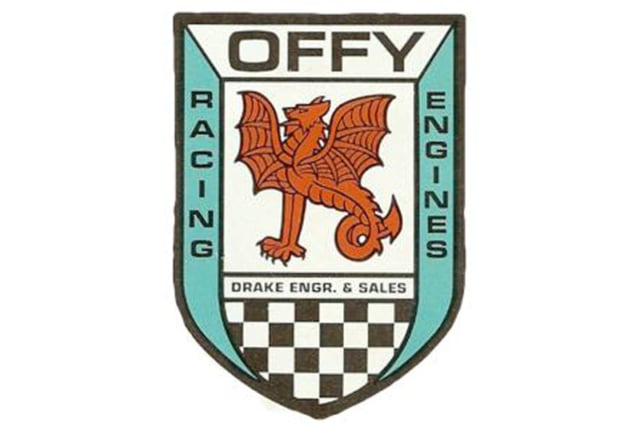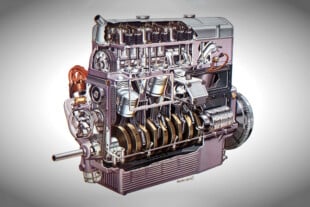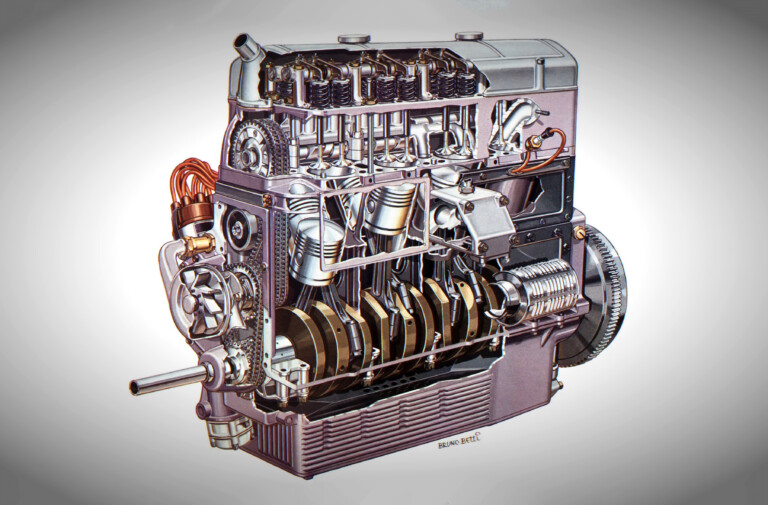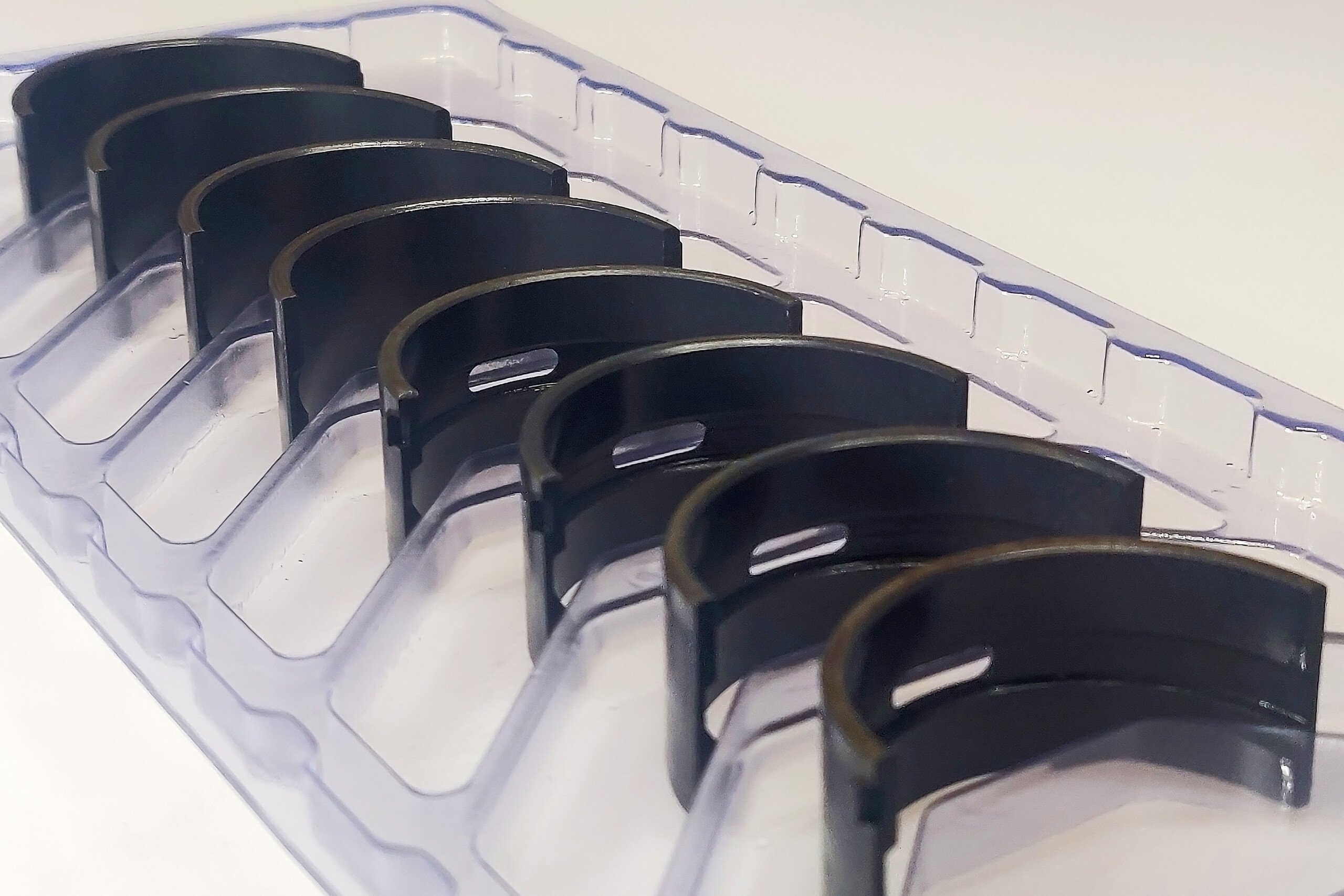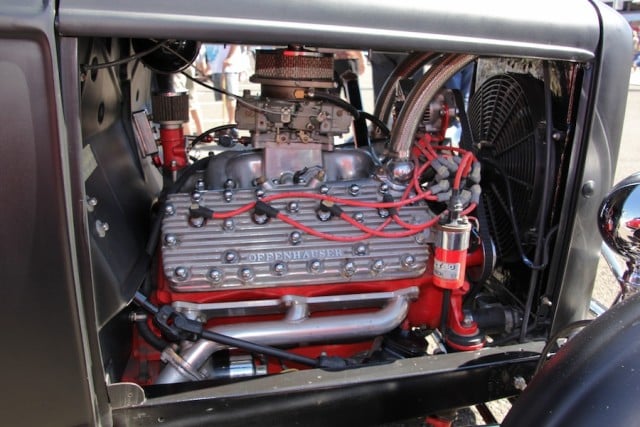 In the history of auto racing, there’s really nothing else like the Offenhauser “Big 4” engines. This engine was fundamentally designed in the 1920s and refined in the 1930s, and it has been winning races since its inception. The same design dominated Indianapolis racing throughout the 1950s and into the 1960s. As late as the mid-1970s, Offenhauser-powered cars continued to win the Indy 500 year after year.
In the history of auto racing, there’s really nothing else like the Offenhauser “Big 4” engines. This engine was fundamentally designed in the 1920s and refined in the 1930s, and it has been winning races since its inception. The same design dominated Indianapolis racing throughout the 1950s and into the 1960s. As late as the mid-1970s, Offenhauser-powered cars continued to win the Indy 500 year after year.
The Harry Miller era
The Offenhauser engine was actually conceived by Harry Arminius Miller, who was a well-known and respected automobile and racecar designer in the 1920s. A Miller-designed car won the 1922 Indy 500, and won again four more times in that decade.
Miller was so prominent in his field that when Leon Duray took two Miller Type 91 front-wheel-drive cars to race in Europe in 1928, Ettore Bugatti bought both of the cars to learn how the American racers were built. Bugatti’s next engine bore a striking resemblance to the Miller engine.
Miller’s 1920s engines were inline eight-cylinder designs, but they were essentially two four-cylinder engines bolted together. The engines used hemispherical combustion chambers with one or two intake and one or two exhaust valves per cylinder. The cams were placed on top of the engine, actuating the valves directly. The engine was mounted longitudinally in the frame, but with the clutch and transmission in front of the engine, and the final drive and axle powering the front wheels. Later, Miller experimented with four-wheel-drive racecars, but did not meet with success.
The Great Depression forced Miller’s company into bankruptcy in 1933, and all the assets went up for auction. Fortunately for the racing world, his shop foreman Fred Offenhauser and designer Leo Goossen were able to buy the designs and the tooling at the bankruptcy auction, and went on building and developing the Miller engines.
A very simple design
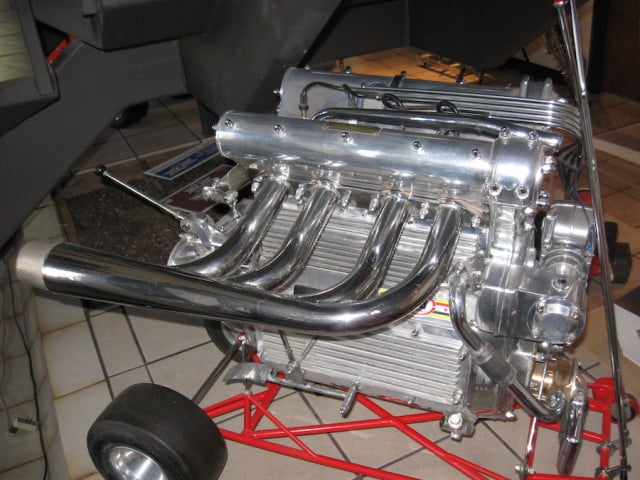 Taking over the Miller engine business in the 1930s wasn’t easy. Because of rule changes at Indianapolis, Offenhauser focused on large displacement 4-cylinder engines.
Taking over the Miller engine business in the 1930s wasn’t easy. Because of rule changes at Indianapolis, Offenhauser focused on large displacement 4-cylinder engines.
The Miller/Offenhauser design was actually very simple. The cylinders and head were integral, preventing any head gasket issues. The crankcase was a separate assembly bolted to the bottom of the cylinder and head casting. To assemble the crankcase, the bearings are bolted around the crank, and then lowered into the crankcase, which must be heated to seat the bearing carriers into place. Pistons and rods are inserted into the cylinders, and then the two halves of the engine are joined.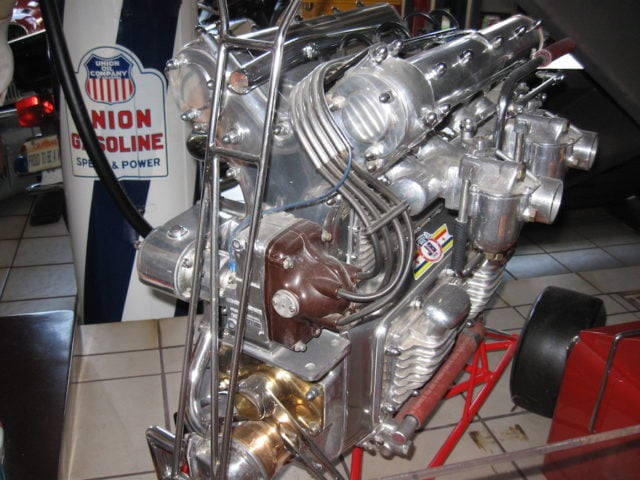
Cam towers are installed on top of the cylinder block to directly actuate the valves, and the cams are gear-driven off the crankshaft, along with an oil pump, magneto, and in some cases a supercharger. The design makes changing cam profiles a very simple proposition.
The golden era
The Offenhauser engine won its first Indianapolis 500 in 1935, and won again in 1937 and 1941. World War II put an end to racing from 1942 to 1945, and the Offenhauser shop spent the war years producing hydraulic equipment for the military. When normal activities resumed in 1946, Fred Offenhauser was ready to retire. He sold his share of the business to Louis Meyer and Dale Drake, who kept the Offenhauser name.
The postwar years were a golden era for Offenhauser racing engines. From 1947 to 1964, every winner of the Indianapolis 500 was driving an Offy engine, and in most of those years the entire podium was powered by Offenhauser.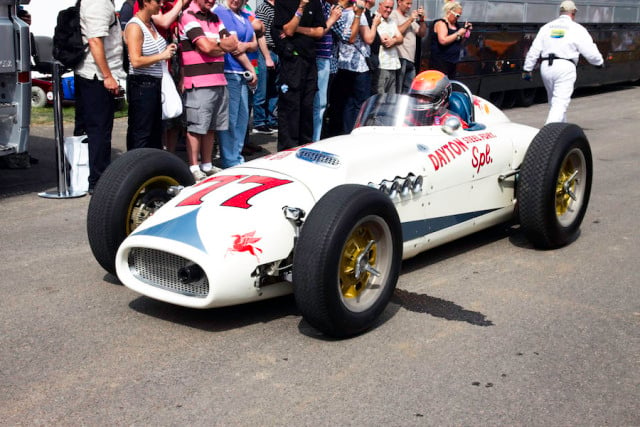
Displacements changed with the rules at Indy and other series as laid down by AAA and then USAC, but Midget Sprints, Sprint cars, and Indy Cars all used Offenhauser engines. The largest of the Offys displaced 4.4 liters (270 cubic inches), at more than a liter per cylinder. Compression ratios ran as high as 15:1 and power output approached 1,000 horsepower from the big four-cylinder plants.
An enduring legacy
Even after the Offenhauser was supplanted at Indianapolis in the mid-1960s, many drivers continued to run the engines through the mid-1970s. Turbocharging came into vogue, and that gave the venerable Offy a new lease on life. Offenhauser won Indy again in 1968, powering Bobby Unser to the winner’s circle with a turbocharged 2.75-liter (168 cubic inch) engine. Then Offy had another golden era, winning five years in a row from 1972 to 1976 with a turbocharged 2.6-liter (159 cubic inch) engine format.
But in addition to its victories at Indianapolis, the Offenhauser engine was the basis of Sprint car racing for decades, and it even made successful forays into sports car racing. Drivers could choose Hilborn fuel injection or a variety of carbureted inductions and combine them with supercharging or turbocharging.
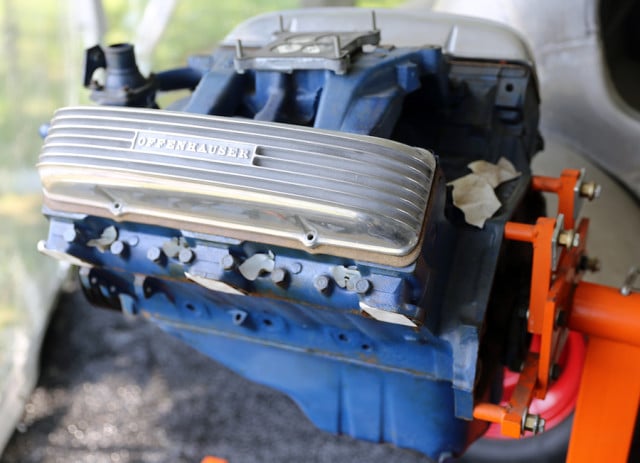 Because the Indianapolis rules specified only total displacement, many drivers and builders experimented with varying the bore and stroke of the Offy engine, so there are many different cranks and pistons out in the world made for the Offenhauser engine. If you plan to buy an Offy for your racecar, be sure to check for parts availability.
Because the Indianapolis rules specified only total displacement, many drivers and builders experimented with varying the bore and stroke of the Offy engine, so there are many different cranks and pistons out in the world made for the Offenhauser engine. If you plan to buy an Offy for your racecar, be sure to check for parts availability.
Today, the Offenhauser name lives on and the company still produces parts for hot rod and custom cars. From the end of the second world war, Offenhauser made high-performance parts for Ford flathead V8 engines, and those are still in production today, with molds made from the original carved wood patterns.
The qualities that made the Offenhauser engine a success are its simplicity, reliability, and ingenuity of design. Offenhauser engines could make up to three horsepower per cubic inch, which remains an impressive figure by modern standards. Finally, if you look at today’s popular DOHC inline four-cylinder engines, the similarity to Harry Miller’s design from the 1920s, as refined by Fred Offenhauser and Leo Goossen, is obvious. The Offenhauser engine design may well be immortal.



